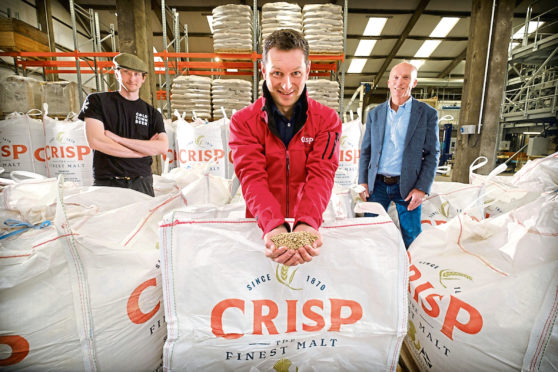A £2 million investment in a new packing line in Alloa means Scottish craft brewers will have access to small quantities of malt grown by local farmers without it first being hauled south of the border.
Until now none of the major maltsters have bagged their produce in Scotland, with truckloads of malt transported south then returned in bags. But Crisp Malt’s new automated packing line will bag it in both large and relatively small quantities which the company says is ideal for the growing craft brewing market – and better for the environment.
They estimate HGV miles will be reduced by up to 35,000 miles a year, based on the 800-mile round trip from Alloa to Norfolk where malt has previously been packaged.
The Alloa maltings produces 28,000 tonnes of malt annually, with around 90% of the barley sourced from farms within a 50-mile radius of the site, including Leckerstone near Dunfermline which has supplied Crisp for five years.
Farmer John Hutcheson said the development was welcome because it meant his barley would stay in Scotland and have a direct connection with a Scottish brewery.
“Provenance has become so important for consumers and brands, and having this focus on a local supply chain allows provenance to be tracked from the field right through to the beer,” he said.
“For farmers, this preserves the identity of the barley and it becomes not just part of the brewing process, but part of the story of the beer itself.”
Crisp said the new facility, which has four 60-tonne silos capable of packaging up to 7,000 tonnes a year, would also allow it to expand exports of Scottish malt to growing craft beer markets such as the US, Japan and Scandinavia.










